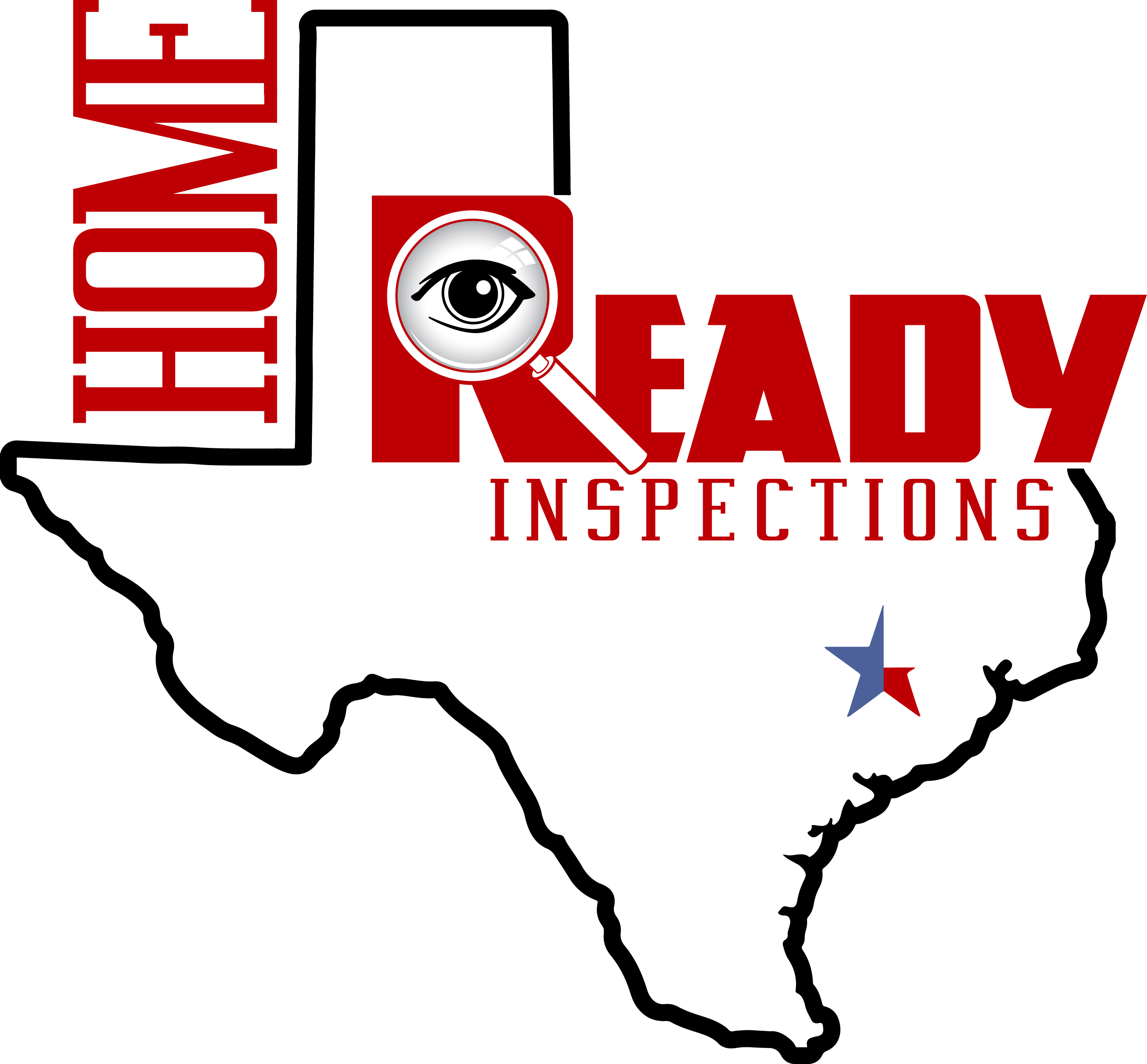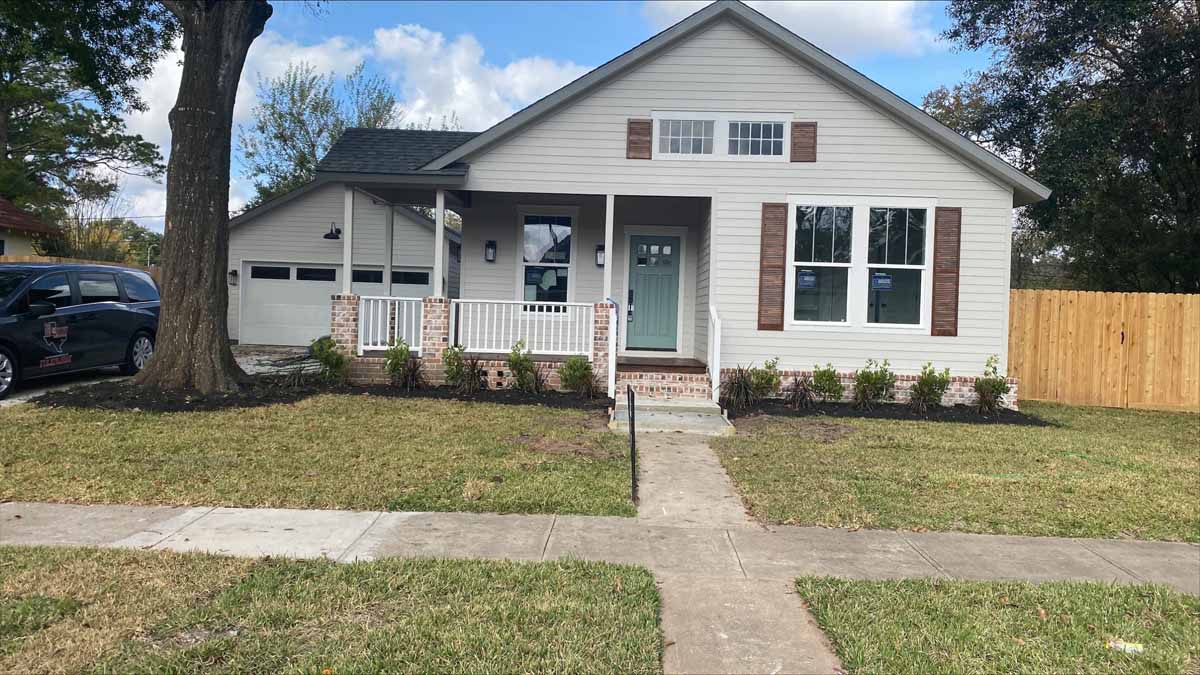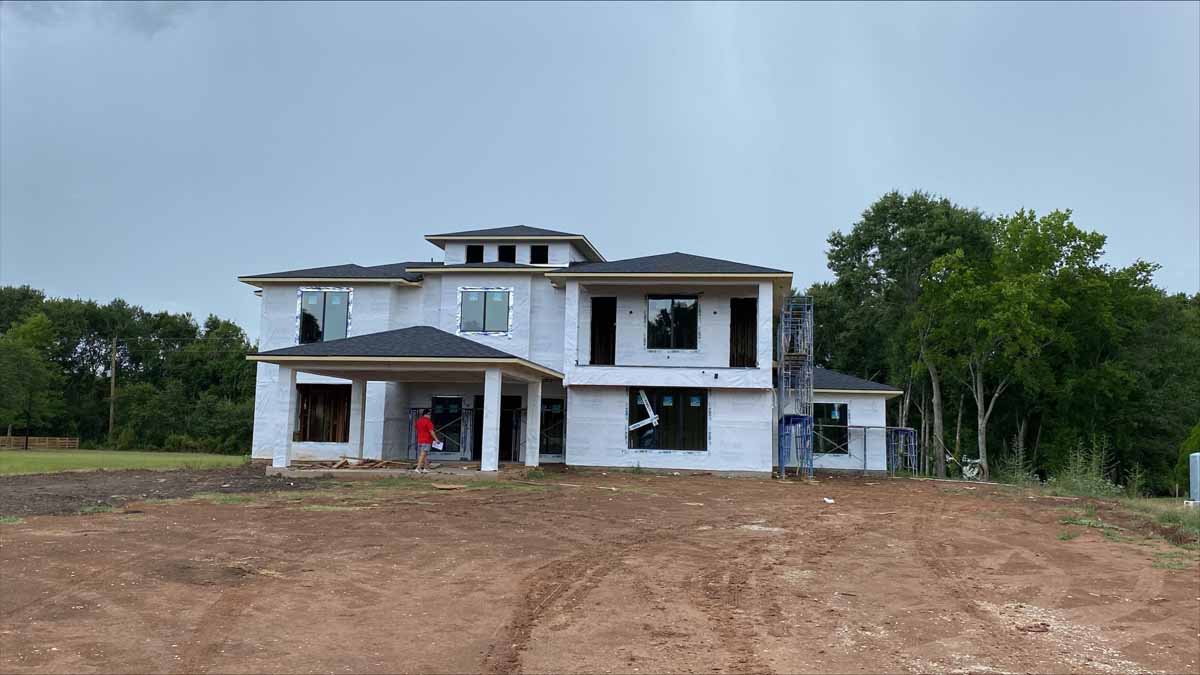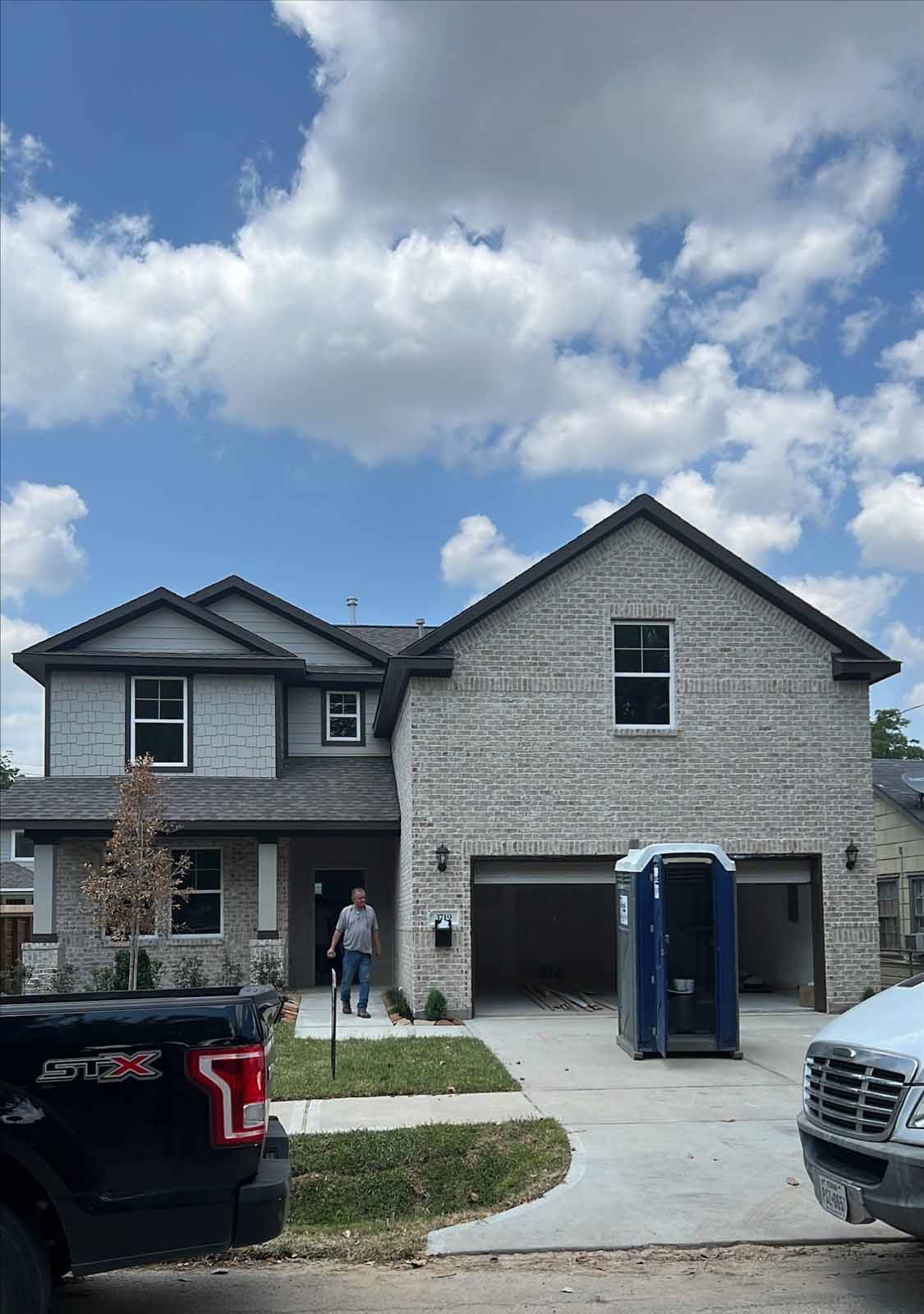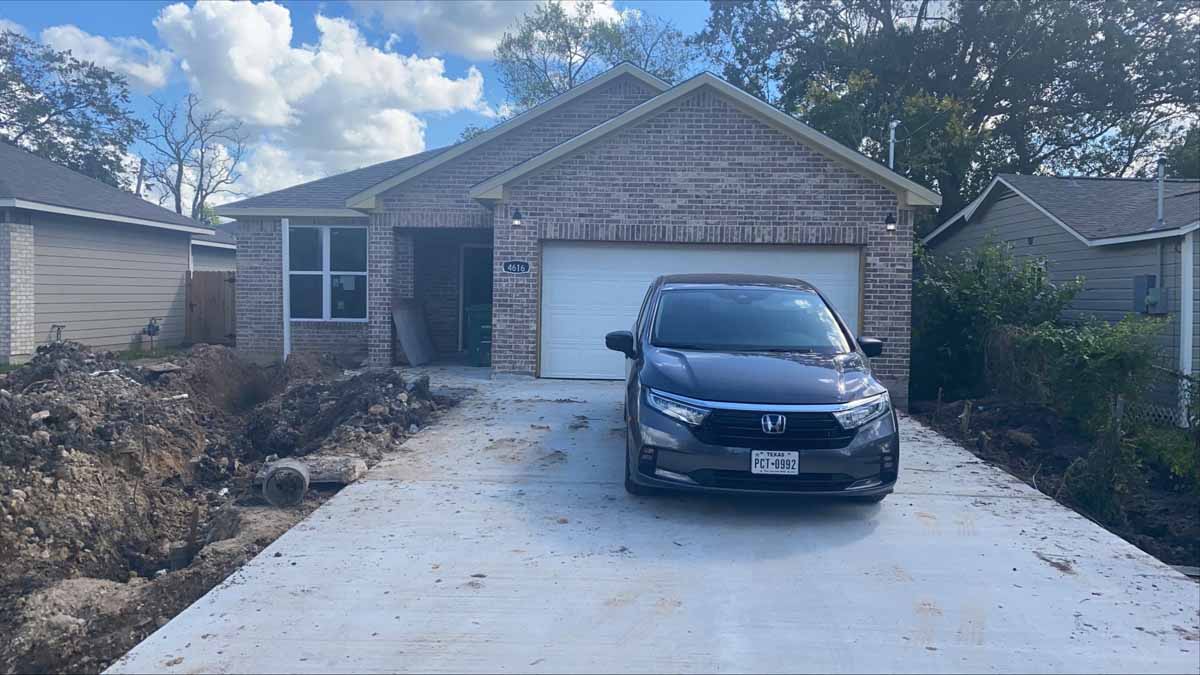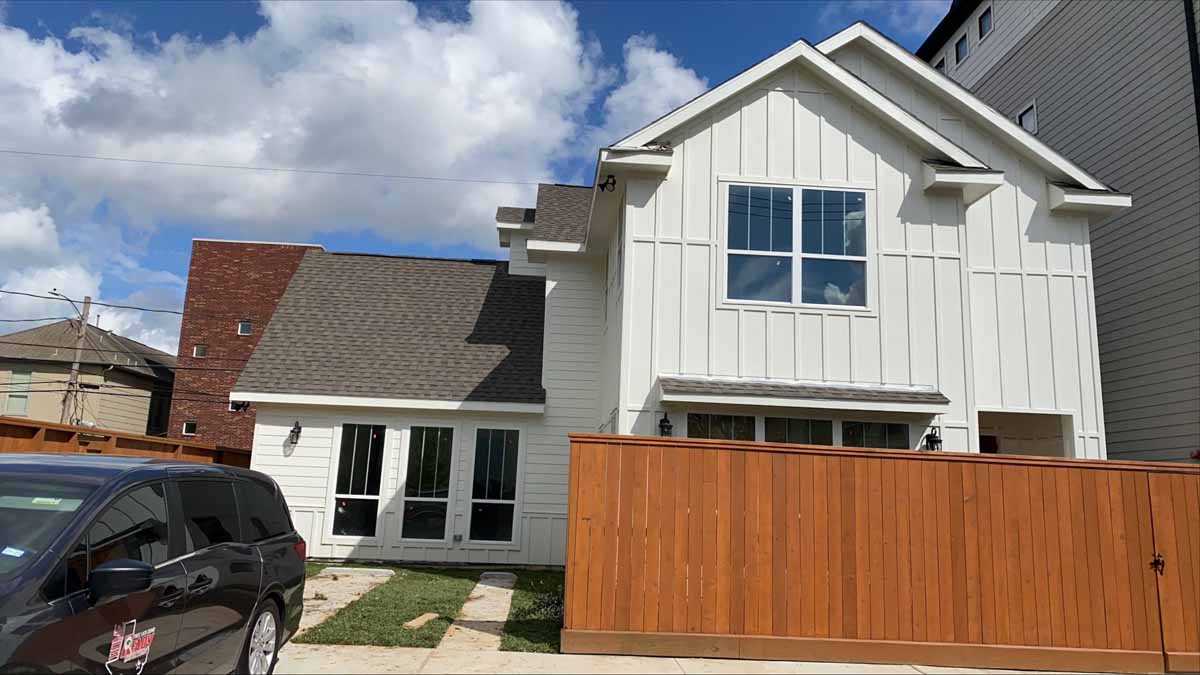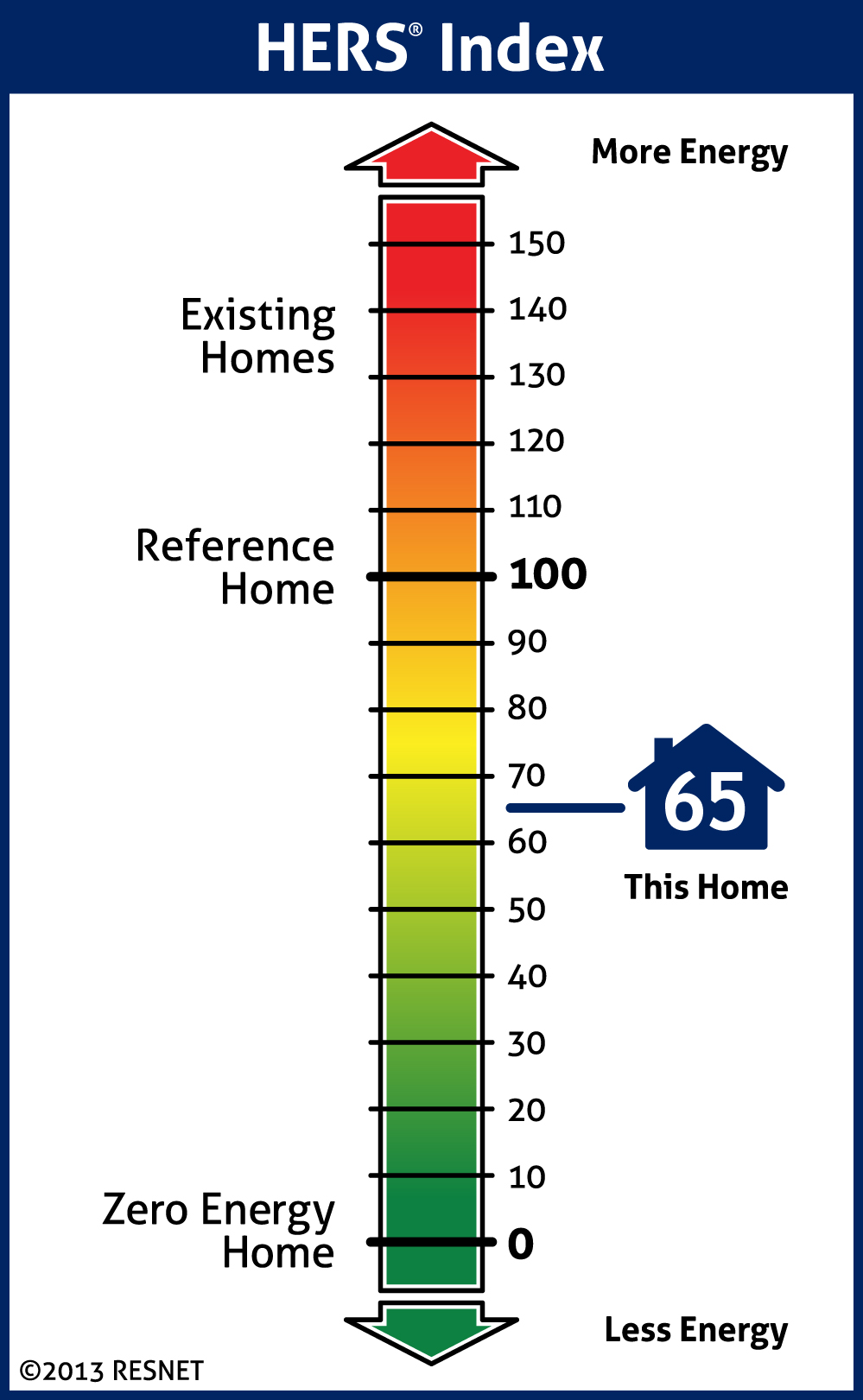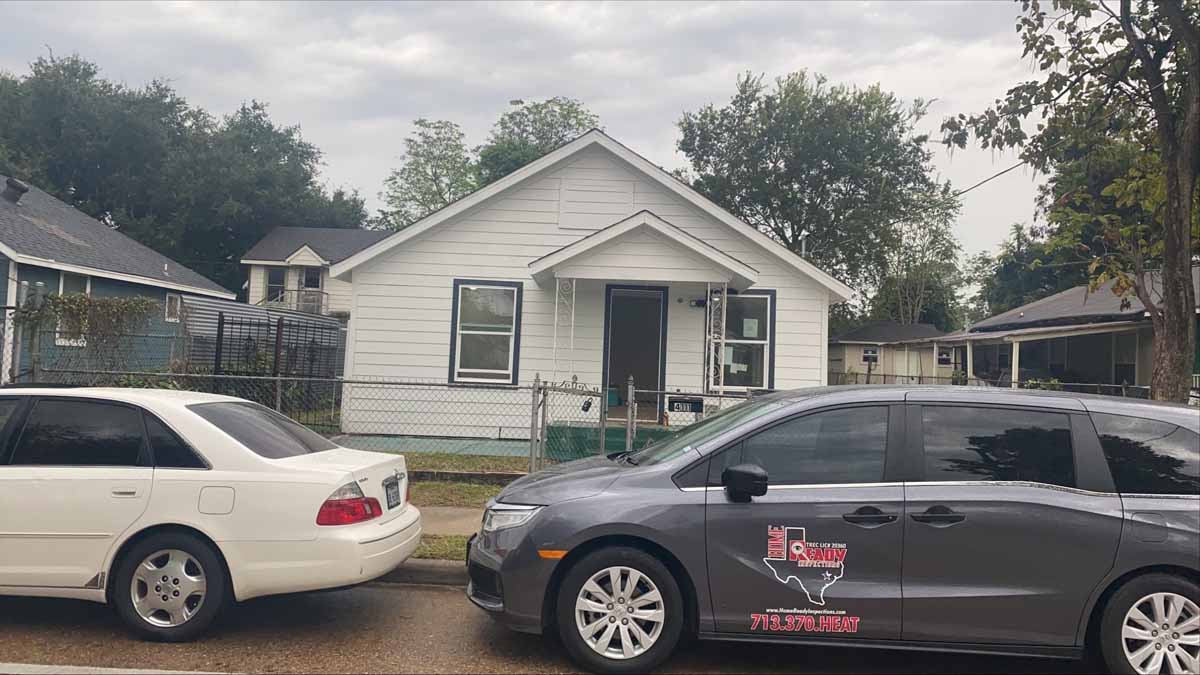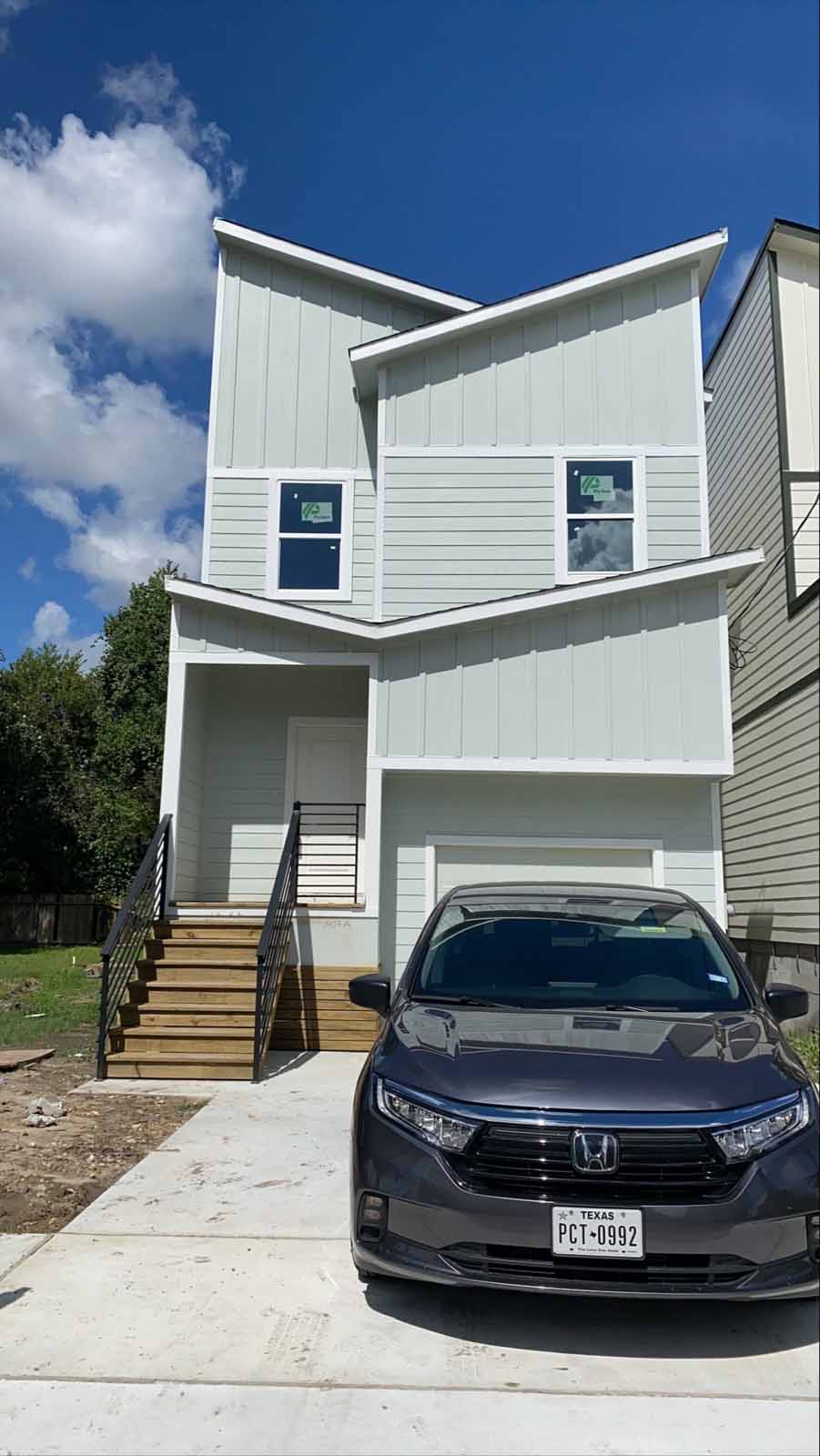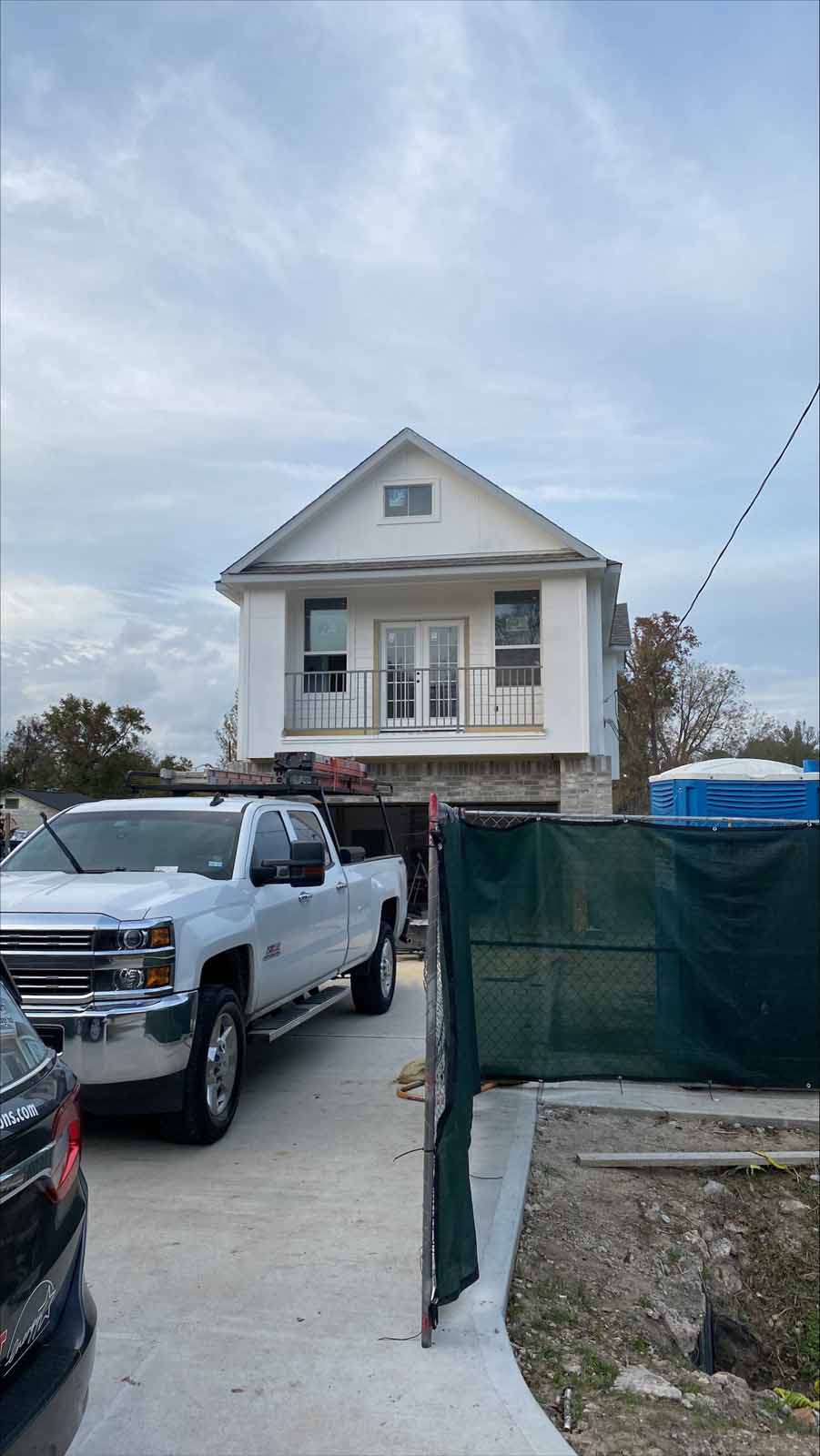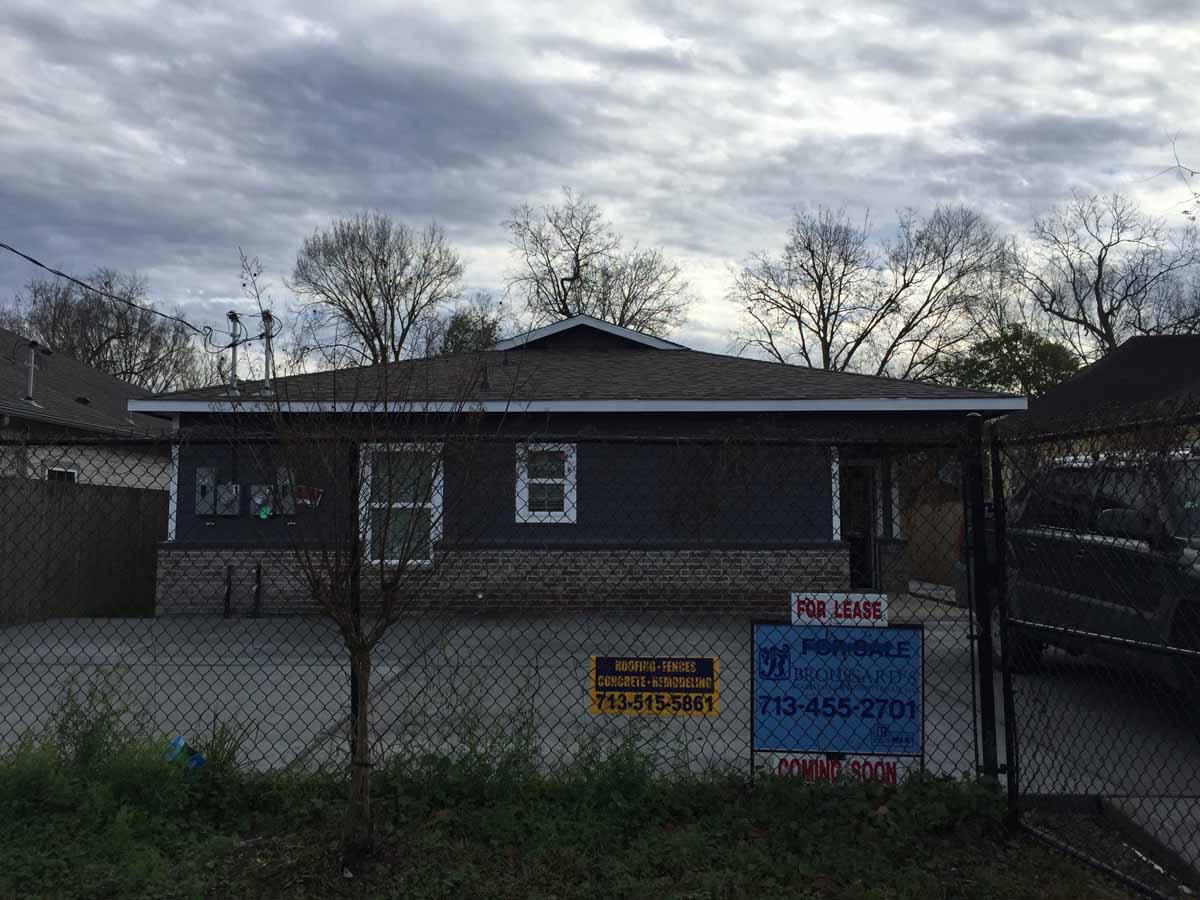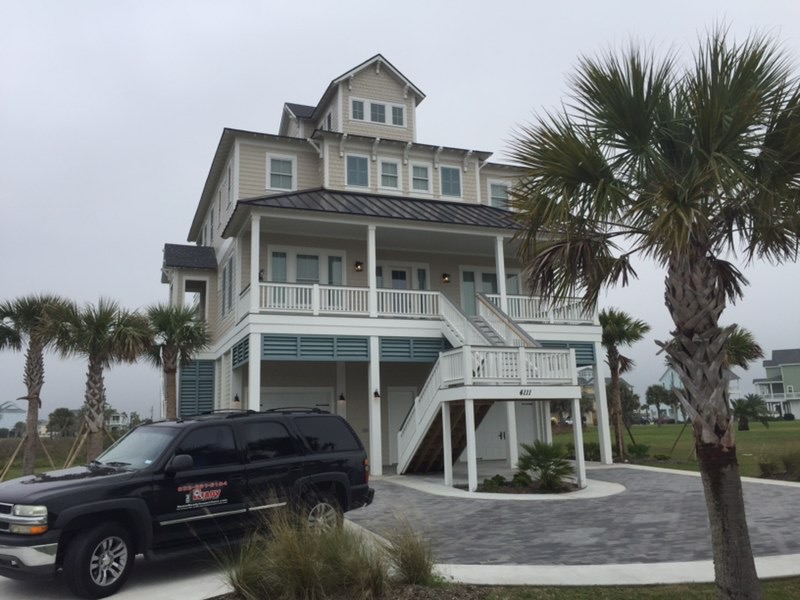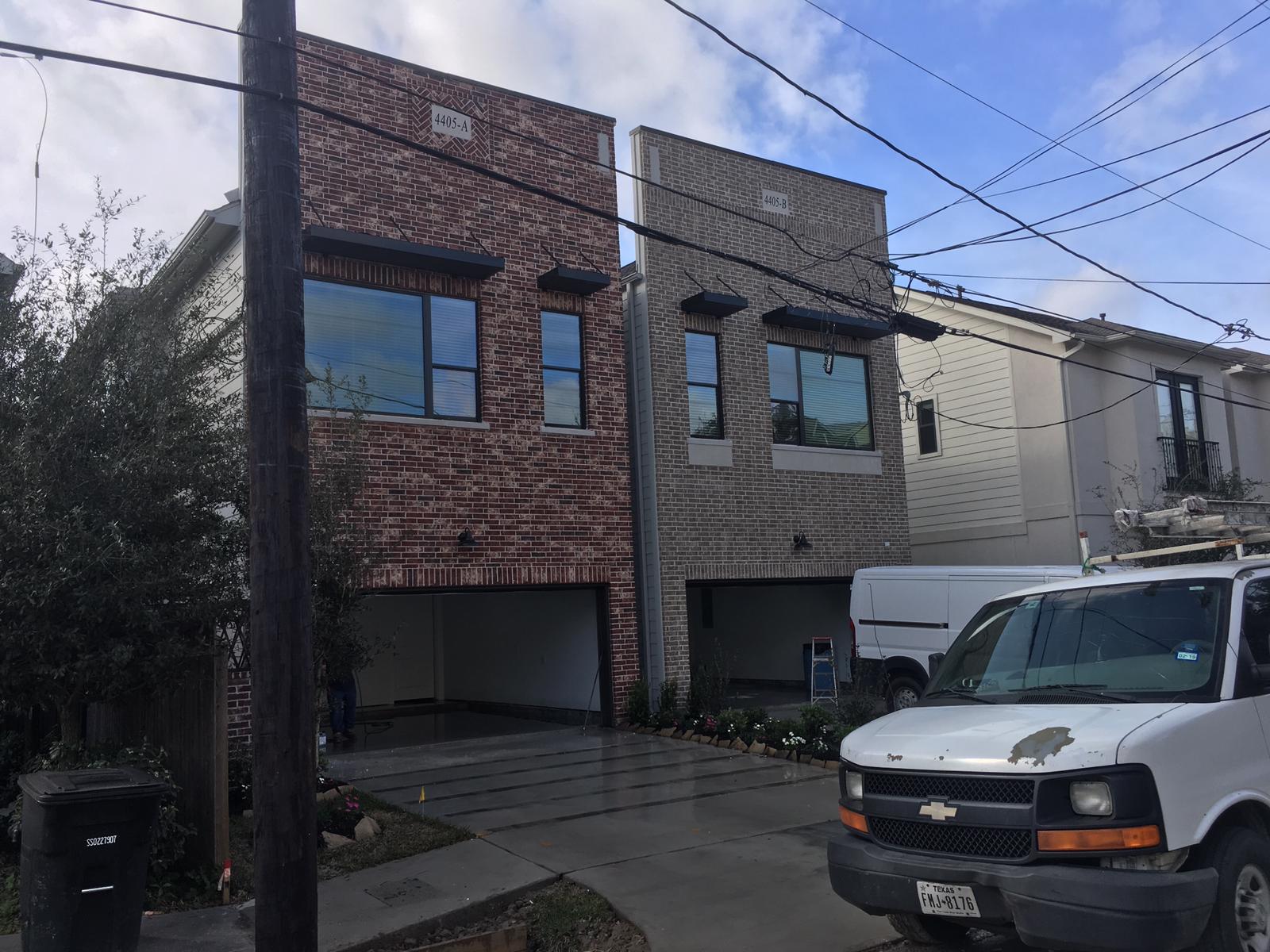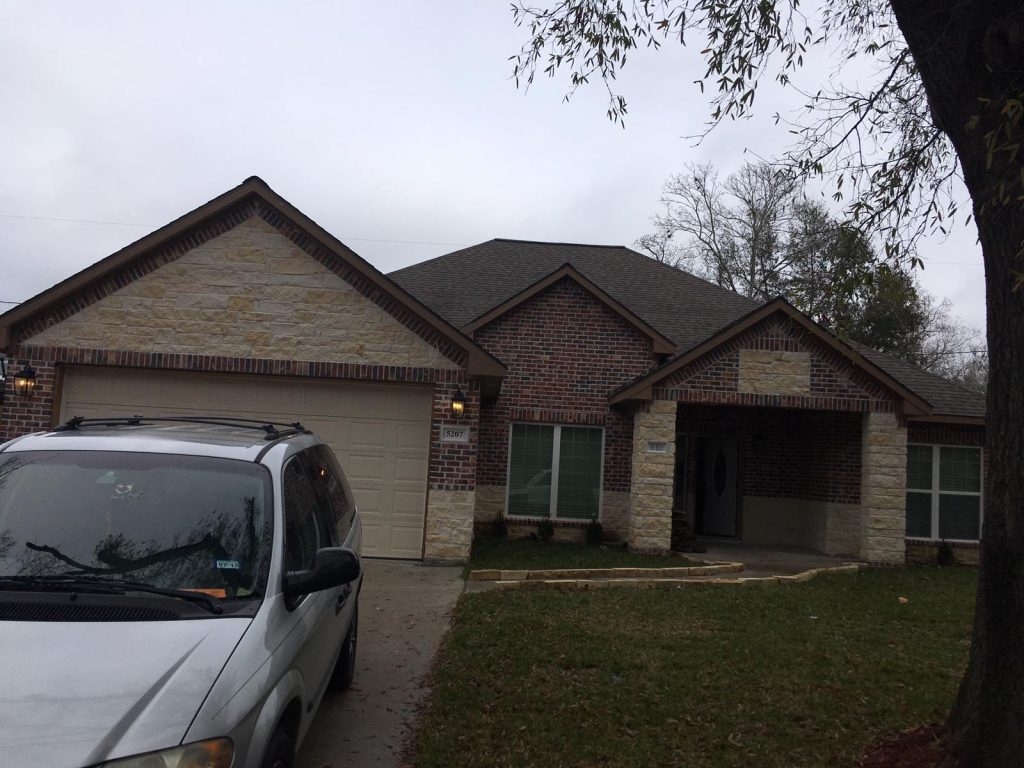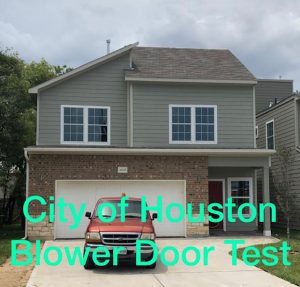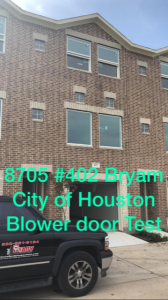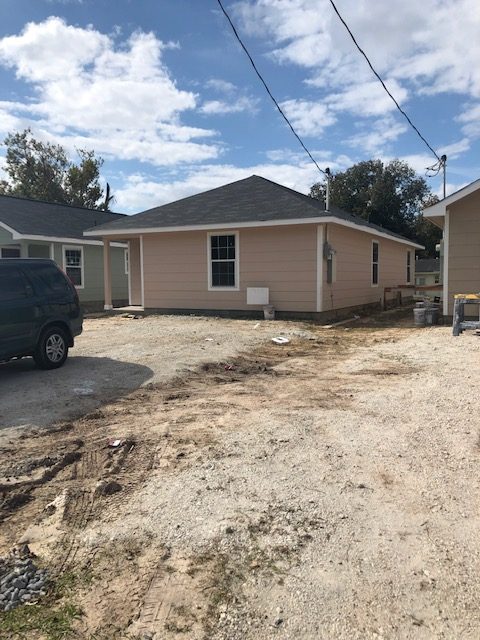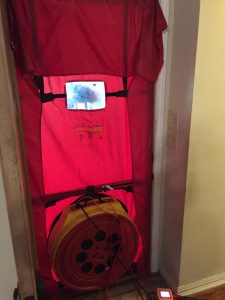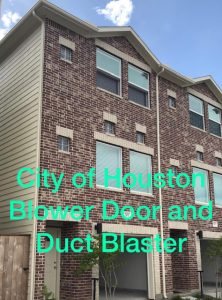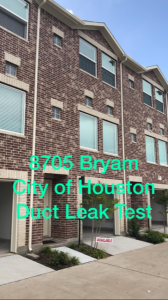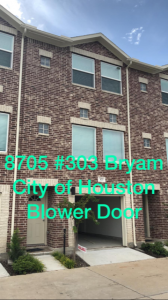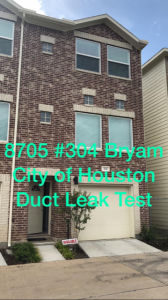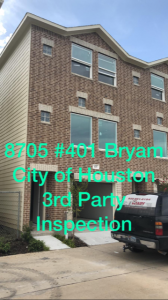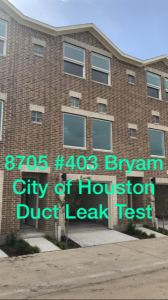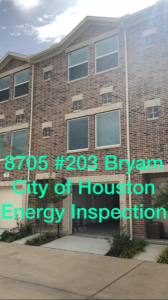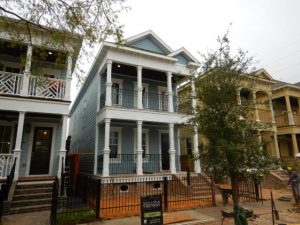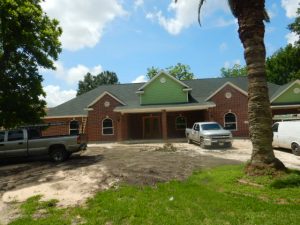1806 Chippendale Rd. Houston TX, 77018 – Maintaining and Upgrading Existing Duct Systems – City of Houston Duct Leakage Test
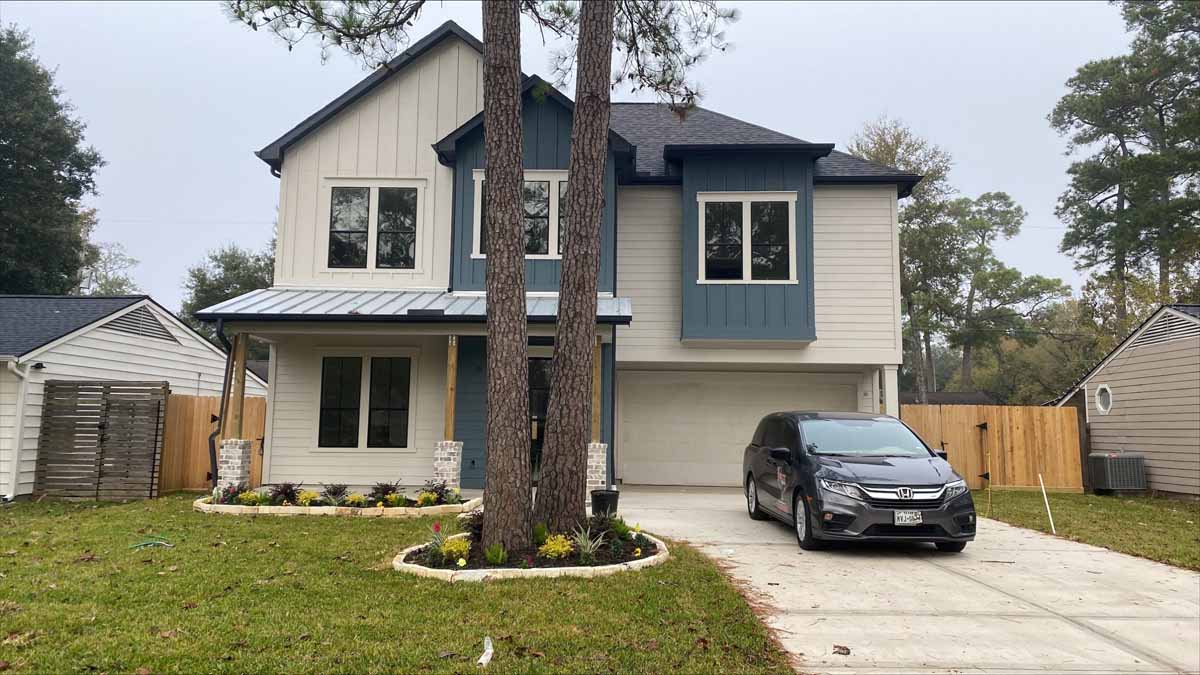
Maintaining and Upgrading Existing Duct Systems
Sealing your ducts to prevent leaks is even more important if the ducts are located in an unconditioned area such as an attic or vented crawlspace. If the supply ducts are leaking, heated or cooled air can be forced out of unsealed joints and lost. In addition, unconditioned air can be drawn into return ducts through unsealed joints.
Although minor duct repairs are easy to make, qualified professionals should seal and insulate ducts in unconditioned spaces to ensure the use of appropriate sealing materials.
Aside from sealing your ducts, the simplest and most effective means of maintaining your air distribution system is to ensure that furniture and other objects are not blocking the airflow through your registers, and to vacuum the registers to remove any dust buildup.
Existing duct systems often suffer from design deficiencies in the return air system, and modifications by the homeowner (or just a tendency to keep doors closed) may contribute to these problems. Any rooms with a lack of sufficient return airflow may benefit from relatively simple upgrades, such as the installation of new return-air grilles, undercutting doors for return air, or installing a jumper duct.
Some rooms may also be hard to heat and cool because of inadequate supply ducts or grilles. If this is the case, you should first examine whether the problem is the room itself: fix any problems with insulation, air leakage, or inefficient windows first. If the problem persists, you may be able to increase the size of the supply duct or add an additional duct to provide the needed airflow to the room.
Schedule your Duct Leakage Test by the best! We not only preform duct testing on your home, but we troubleshoot if any there’s any problems. Call us today! 832-661-6154 to schedule your home.
119 W 6th St Houston TX, 77007 – City of Houston Blow Door/ Duct Leakage Test – Programmable Thermostat Energy Savers
Programmable Thermostat Operation
You can save as much as 10% a year on heating and cooling by simply turning your programmable thermostat back 7°-10°F for 8 hours a day from its normal setting. The percentage of savings from setback is greater for buildings in milder climates than for those in more severe climates.
The smaller the difference between the indoor and outdoor temperatures, the lower your overall cooling bill will be. You can easily save energy in the winter by setting the thermostat to around 68°F while you’re awake and setting it lower while you’re asleep or away from home. In the summer, you can follow the same strategy with central air conditioning by keeping your house warmer than normal when you are away and setting the thermostat to a setting as high as is comfortable for you when you are at home and need cooling and to ensure humidity control if needed.
Although thermostats can be adjusted manually, programmable thermostats will avoid any discomfort by returning temperatures to normal before you wake or return home.
Avoid setting your thermostat at a colder setting than normal when you turn on your air conditioner. It will not cool your home any faster and could result in excessive cooling and, therefore, unnecessary expense. A common misconception associated with thermostats is that a furnace works harder than normal to warm the space back to a comfortable temperature after the thermostat has been set back, resulting in little or no savings. In fact, as soon as your house drops below its normal temperature, it will lose energy to the surrounding environment more slowly.
During winter, the lower the interior temperature, the slower the heat loss. So, the longer your house remains at the lower temperature, the more energy you save, because your house has lost less energy than it would have at the higher temperature. The same concept applies to raising your thermostat setting in the summer — a higher interior temperature will slow the flow of heat into your house, saving energy on air conditioning. Check out our home heating infographic to learn more about how heating systems and thermostats interact.
For more information, please give us a call or to schedule your final blow door/ duct leakage test.
C: 832-661-6154
4311 Lake wood Dr Missouri City, TX 77459 Foam Insulation Inspection
Need your homes insulation inspected before dry wall?
Types of Foam Insulation
Today, most foam materials use foaming agents that don’t use chlorofluorocarbons (CFCs) or hydrochlorofluorocarbons (HCFCs), which are harmful to the earth’s ozone layer.
There are two types of foam-in-place insulation: closed-cell and open-cell. Both are typically made with polyurethane. With closed-cell foam, the high-density cells are closed and filled with a gas that helps the foam expand to fill the spaces around it. Open-cell foam cells are not as dense and are filled with air, which gives the insulation a spongy texture.
The type of insulation you should choose depends on how you will use it and on your budget. While closed-cell foam has a greater R-value and provides stronger resistance against moisture and air leakage, the material is also much denser and is more expensive. Open-cell foam is lighter and less expensive but should not be used below ground level where it could absorb water. Consult a professional insulation installer to decide what type of insulation is best for you.
Other available foam insulation materials include:
- Cementitious
- Phenolic
- Polyisocyanurate (polyiso)
Some fewer common types include Icynene foam and Tripolymer foam. Icynene foam can be either sprayed or injected, which makes it the most versatile. It also has good resistance to both air and water intrusion. Tripolymer foam—a water-soluble foam—is injected into wall cavities. It has excellent resistance to fire and air intrusion.
well, we’re your guys give us a call 832-661-6154
3811 Neptune, Galveston, TX 77554 – City of Galveston – Manual J
House to humid with the A/C on still above the 50% mark?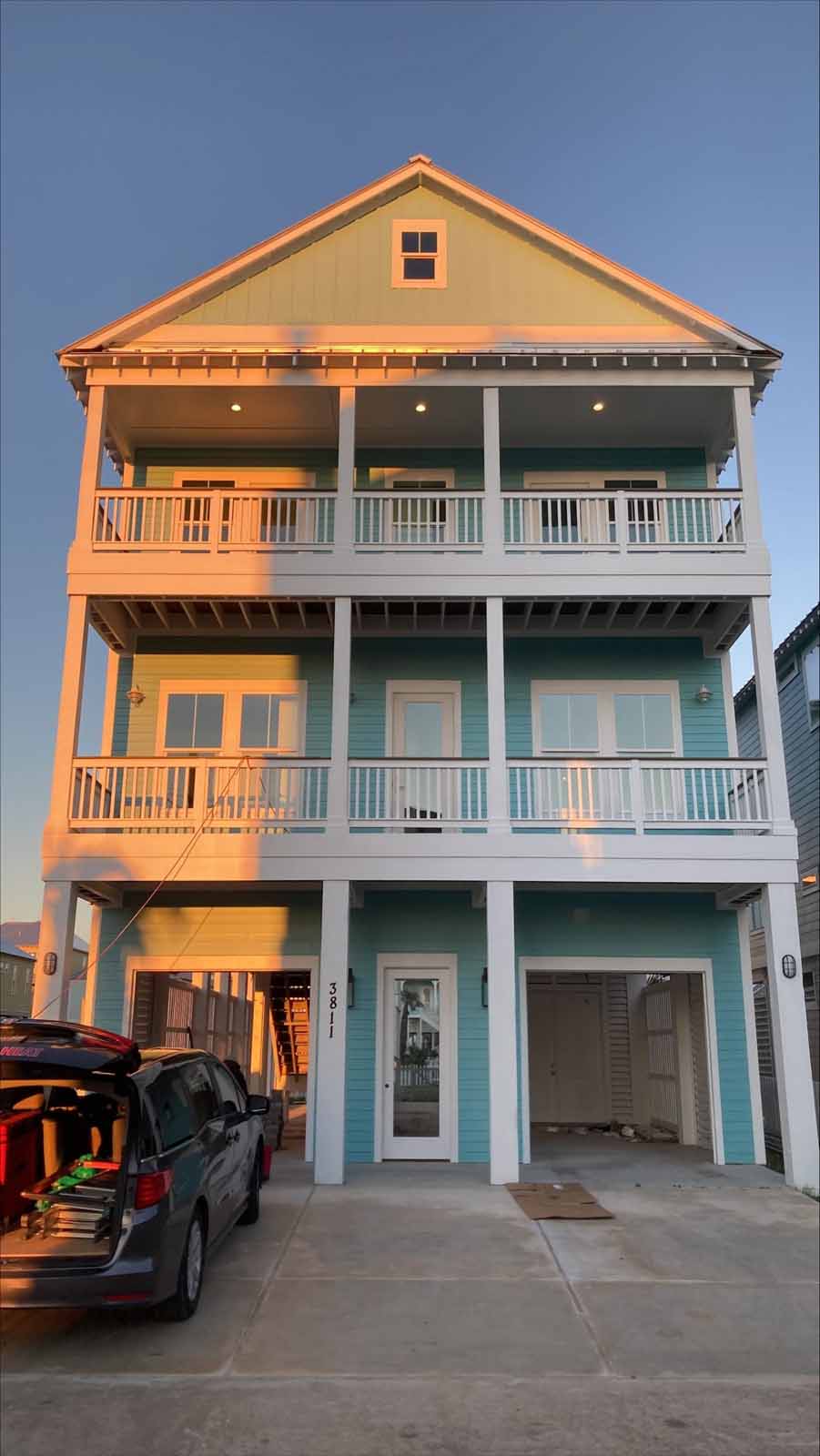
The purpose of this research is to develop and validate an integrated humidity and ventilation control solution to improve indoor air quality, comfort, and energy performance for low-load homes in hot-humid and mixed-humid climates. The solution strategy is to coordinate the cooling, dehumidification, and ventilation functions of central HVAC systems to capture energy savings while improving ventilation effectiveness and comfort. This includes re-evaluating the AC systems to optimize dehumidification during part-load conditions (enhanced dehumidification), developing a control strategy to integrate supply-type ventilation prioritized to operate during on-cycles (prioritized ventilation), and developing metrics to quantify system performance including energy savings and cost-effectiveness.
An integrated humidity and ventilation control solution will improve indoor air quality, comfort, and energy performance for low-load homes in hot-humid and mixed-humid climates, simplifying the transition to high-performance ventilation and humidity control systems.
The results of this project will simplify the transition to high-performance ventilation and humidity control systems. By relying on the central system as a starting point, the strategy will allow for optimization across key metrics to a degree that is not possible with alternatives. To enable standardization and broad industry impact, a secondary equipment rating based on latent load efficiency will be proposed.
COMPLETED WORK:
- Conducted house test design reviews of Air Conditioning Contractors of America (ACCA) manual J/S/D with Wrightsoft and HVAC partners
- Developed ventilation protocol with Aprilaire
- Commissioned and instrumented systems at 3 test homes: Houston 1-stage and 2-stage AC, Savannah 1-stage HP
- Developed enhanced dehumidification protocols/controls with Goodman partner
For more information, project presentations, and related publications, visit the Advanced HVAC Humidity Control for Hot-Humid Climates web page.
Make sure you have the proper equipment call 832-661-6154 to schedule a Manual J
3719 Anita Street, Houston TX 77004- City of Houston – Blower Door
What is a Blower Door?
A blower door test is a way to check how air-tight a structure is. It is designed to check for air leaks in walls, attics, and mechanical penetrations. While a blower door test does not evaluate how well a structure is insulated, it can reveal drafty walls and air-bypass situations that could undermine otherwise well insulated wall assemblies. A poorly sealed houses will have higher utility bills, issues with comfort, and potential mold and rot issues caused by moisture. Blower door testing can be carried out on residential homes, commercial structures, and industrial buildings. In some states they are required by code for residential areas. (Always check with your local building codes).
While the blower test is being conducted, the analyst may use an infrared camera to look at the walls, ceilings, and floors, to find specific locations where insulation is missing, and air is leaking. The analyst may also use a nontoxic smoke pencil to detect air leaks in your home. These tests determine the air infiltration rate of your home, which is recorded on a laptop or tablet.
The test is conducted as part of the energy assessment of your home. Your contractor may also operate the blower door while performing air sealing (a method known as blower door assisted air sealing), and after to measure and verify the level of air leakage reduction achieved.
Blower doors consist of a frame and flexible panel that fit in a doorway, a variable-speed fan, a digital pressure gauge to measure the pressure differences inside and outside the home, which are connected to a device for measuring airflow, known as a manometer.
There are two types of blower doors: calibrated and uncalibrated. It is important that auditors use a calibrated door. This type of blower door has several gauges that measure the amount of air flowing out of the house through the fan.
Uncalibrated blower doors can only locate leaks in homes. They provide no method for determining the overall tightness of the home.
The calibrated blower door’s data allow your contractor to quantify the amount of air leakage prior to installation of air-sealing improvements, and the reduction in leakage achieved after air-sealing is completed.
Call TODAY 832-661-6154
Negative House Pressure – 77026 – Detecting Air Leaks
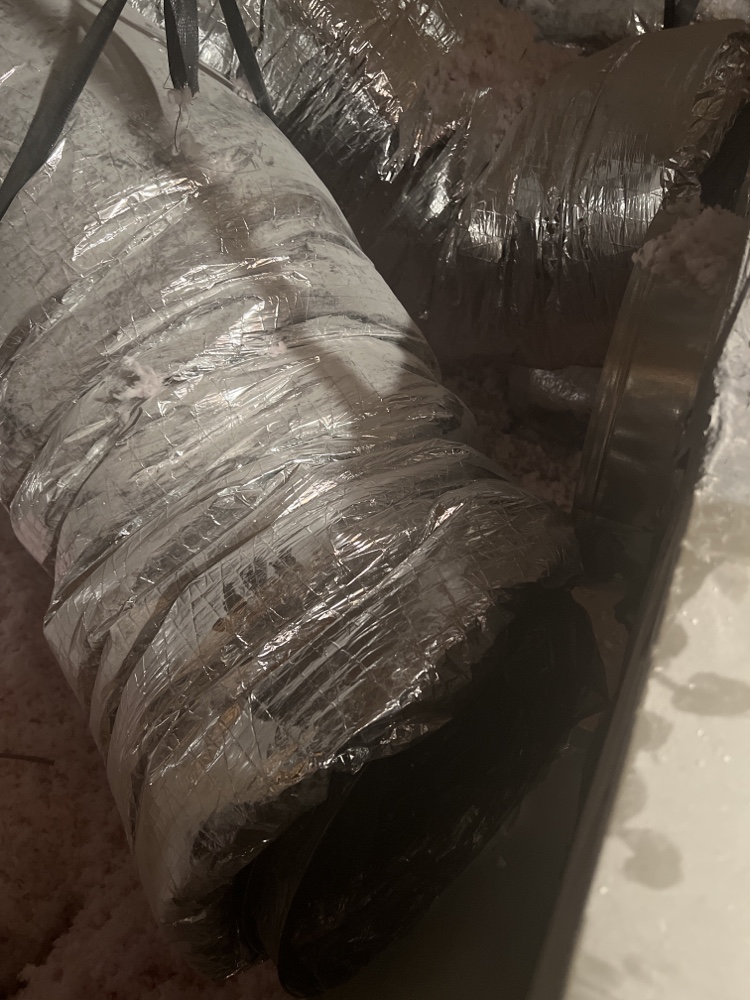
Should your home feel hot or humid check your HVAC duct work.
Visual Inspection
On the outside of your house, inspect all areas where two different building materials meet, including:
- All exterior corners
- Outdoor water faucets
- Where siding and chimneys meet
- Areas where the foundation and the bottom of exterior brick or siding meet.
Inside your home, inspect around the following areas for any cracks and gaps that could cause air leaks:
- Electrical outlets
- Switch plates
- Door and window frames
- Electrical and gas service entrances
- Baseboards
- Weather stripping around doors
- Fireplace dampers
- Attic hatches
- Wall- or window-mounted air conditioners.
- Cable TV and phone lines
- Where dryer vents pass through walls
- Vents and fans.
Also look for gaps around pipes and wires, foundation seals, and mail slots. Check to see if the caulking and weather stripping are applied properly, leaving no gaps or cracks, and are in good condition. Check the exterior caulking around doors and windows and see whether exterior storm doors and primary doors seal tightly.
Inspect windows and doors for air leaks. See if you can rattle them, since movement means possible air leaks. If you can see daylight around a door or window frame, then the door or window leaks. You can usually seal these leaks by caulking or weatherstripping them. Check the storm windows to see if they fit and are not broken.
You may also wish to consider replacing your old windows and doors with newer, high-performance ones. If new factory-made doors or windows are too costly, you can install low-cost plastic sheets over the windows.
Building Pressurization Test
While not as successful as blower door test, if you are having difficulty locating leaks, you may want to conduct a basic building pressurization test to increase infiltration through cracks and leaks, making them easier to detect:
- Turn off all combustion appliances such as gas burning furnaces and water heaters on a cool, very windy day.
- Shut all windows, exterior doors, and fireplace flues.
- Turn on all exhaust fans that blow air outside, such as your clothes dryer, bathroom fans, or stove vents, or use a large window fan to suck the air out of the rooms.
- Light an incense stick and carefully pass it around the edges of common leak sites. Wherever the smoke wavers or is sucked out of or blown into the room, there’s a draft. You can also use a damp hand to locate leaks; any drafts will feel cool to your hand.
If you don’t want to turn off your furnace, you can just turn on all your exhaust fans to depressurize your home.
Other air-leak detection methods include the following:
- Shining flashlight at night over all potential gaps while a partner observes the house from outside. Large cracks will show up as rays of light. Not a good way to detect small cracks.
- Shut a door or window on a dollar bill. If you can pull the dollar bill out without it dragging, you’re losing energy.
Call Miguel 832-661-6154 or Homereadyinspections@gmail.com
2305 Maury St., Houston, TX 77026 – City of Houston Blower Door and Duct Blaster

Control Humidity by Optimizing Fan Speed
Have you ever been in a building that feels cold and clammy at the same time? Or to be more specific, have you experienced what cold and humid conditions feel like? Chances are you have, hopefully not in your current home or work place, however it seems it is more likely than not.
Home energy efficiency is often dominated by discussions about cooling and heating, which account for about 48% of energy costs in the average home. However, when your air has too much moisture, your home may feel warmer than the actual air temperature. Any discussion of energy efficiency, especially in a humid climate, must take moisture control into account.
Did you ever hear someone say the air in your house feels “close?” They’re likely talking about the “feels-like” temperature of the air because the indoor environment is holding a high amount of water vapor, and there’s less evaporation. These factors combine to create a sensation that the room is too warm and there’s less breathable air, despite the temperature reading on the thermostat.
A house with too much humid air in the “building envelope” can have issues with mold and mildew. Moist air can also provide a good environment for bacteria. All are known to adversely affect human health. Excess moisture in the air can take a toll on people, and on furniture, appliances, hardwood floors, carpeting, and, yes, the energy bill—chances are, you are setting your thermostat lower to maintain comfort as you offset the higher amount of humidity you feel in the air.
One solution to moisture control could be a whole-house or portable ENERGY STAR-rated dehumidifier that “wrings” moisture from the air. This is a big commitment that might not be right for everyone. Luckily there are other steps you can take to reduce the amount of moisture in your home.
- Check your clothes dryer. An improperly vented clothes dryer can dump some or all that water from your wet clothes into the air. Make sure your venting system is sealed all the way from the back of your dryer to the exhaust port on your home’s exterior. And be sure to clean the vent regularly, according to the manufacturer’s recommendations.
- Vent your stove and bathroom fans outside. Exhaust fans from cooking surfaces or the bathroom that are vented into your attic only redistribute humidity within your home. All such fans should be vented to the outside, with the system checked for leakage.
- Seal air leaks. Finding the places where outside air is leaking in, and conditioned air is leaking out, and sealing those leaks is a cost-effective way to improve air comfort and cut energy costs. Check your doors and windows for the effectiveness of air seals and caulk or weatherstrip as needed.
- Insulate water pipes. Condensation can occur when there is a difference between the temperature of your water pipes and the humid air in your home. Insulating your water pipes keeps this condensation from occurring on the cold water pipes. This condensation contributes to humidity problems in the home. Insulating hot water pipes eliminates heat loss between the hot water heater and the tap, which means heating and using less water over time. Both will help keep your energy bill in line.
- Monitor drainage around your home. Rainwater and runoff from gutters and downspouts can easily flow toward your foundation and leak or leech into the structure. Directing the water away with landscaping and sealing your foundation can have a big impact on the humidity level in your home, and your energy bill.
We all know the saying, “it’s not the heat, it’s the humidity.” Well, now you know a few new ways to keep the air in your home a little drier, and hopefully a bit more comfortable.
Call Miguel – 832-661-6154
City of Houston Blower Door and Duct Blaster – 77028
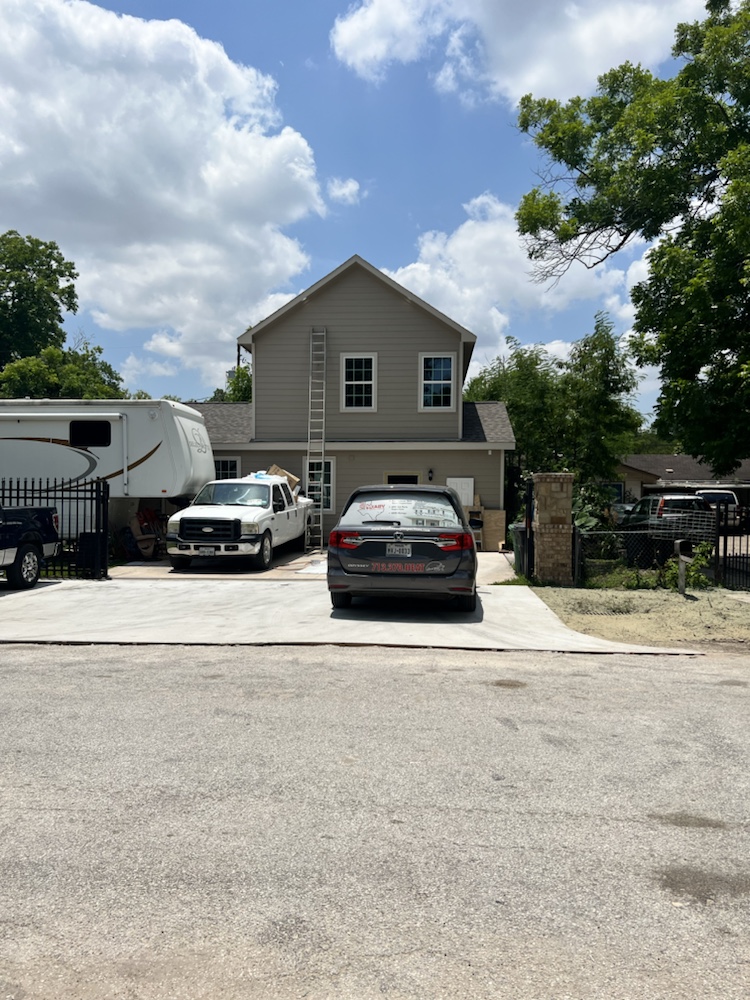
Home Ready Inspections offers a variety of residential Inspections. We are an Energy Star Partner, ResNet Provider, IECC Certified, and Home Inspections. Our experience supersedes any Inspection Company that claim to “Certified” homes. Call today for an experience Inspector at 832-661-6154
12206 Mossycup Drive – Duct Blaster
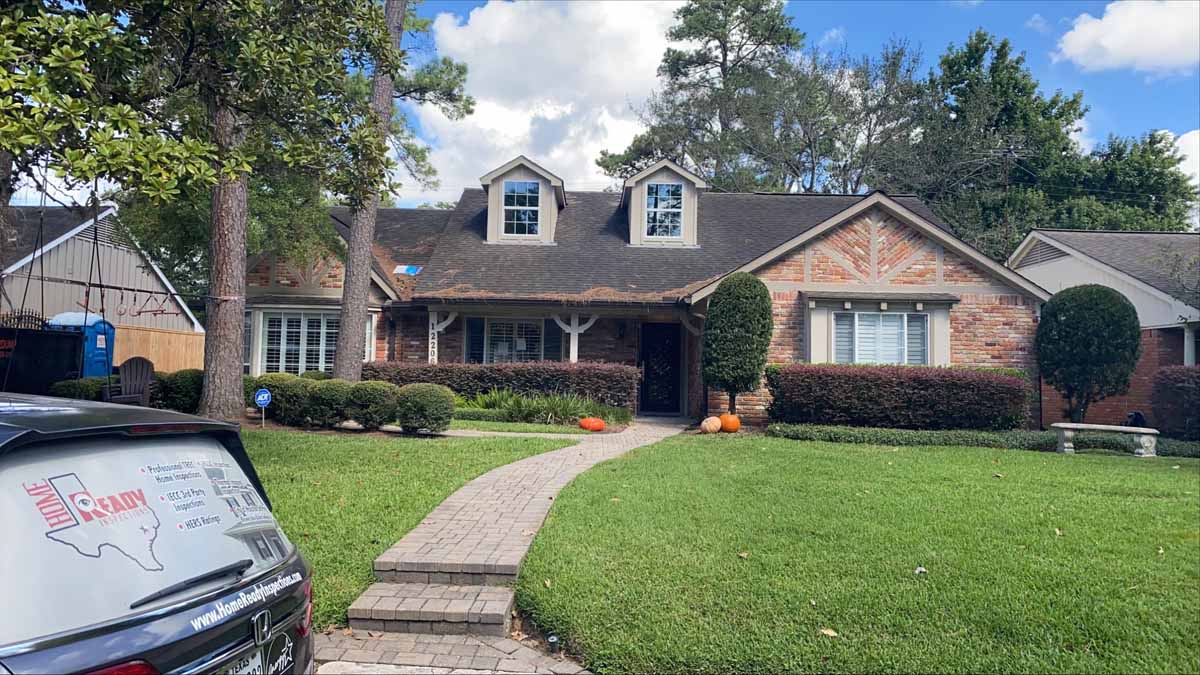
IECC Energy inspection in a ground up project has four aspects: building envelope, mechanical system, electrical power and lighting, and water system. We would like the opportunity to be of service in your commercial building projects. Please feel free to call for any service issues or questions. Home Ready Inspections has the ability to provide same day service. Call today 832.661.6154 or 713.370.HEAT
2015 IECC Inspections – 4616 Galesburg St
Blower Door and Duct Blaster – 4218 Eigel St
Home Ready Certified Energy Rated Home
Home Ready Inspections Now Offer HERS Ratings at an affordable Price.
A HERS Rating is used to determine whether a home meets an acceptable building quality standard. It also provides useful information which can be used to improve the home’s heating and cooling efficiency and thereby lower its energy usage. HERS ratings can be applied to new or existing single family homes as well as multi-family homes.
Call today 832.661.6154 or 713.370.HEAT
Blower Door and Duct Blaster – 4111 Hardy St
1407 E 33rd St, Houston, Texas 77022
IECC Energy inspection in a ground up project has four aspects: building envelope, mechanical system, electrical power and lighting, and water system. We would like the opportunity to be of service in your commercial building projects. Please feel free to call for any service issues or questions. Home Ready Inspections has the ability to provide same day service. Call today 832.661.6154 or 713.370.HEAT
City of Houston Blower Door and Duct Blaster – 922 Randolph Street, Houston, Texas 77088
1729 Saxon Dr – Blower Door and Duct Blaster
628 E 39th St, Houston, TX 77022 – City of Houston Blower Door and Duct Blaster
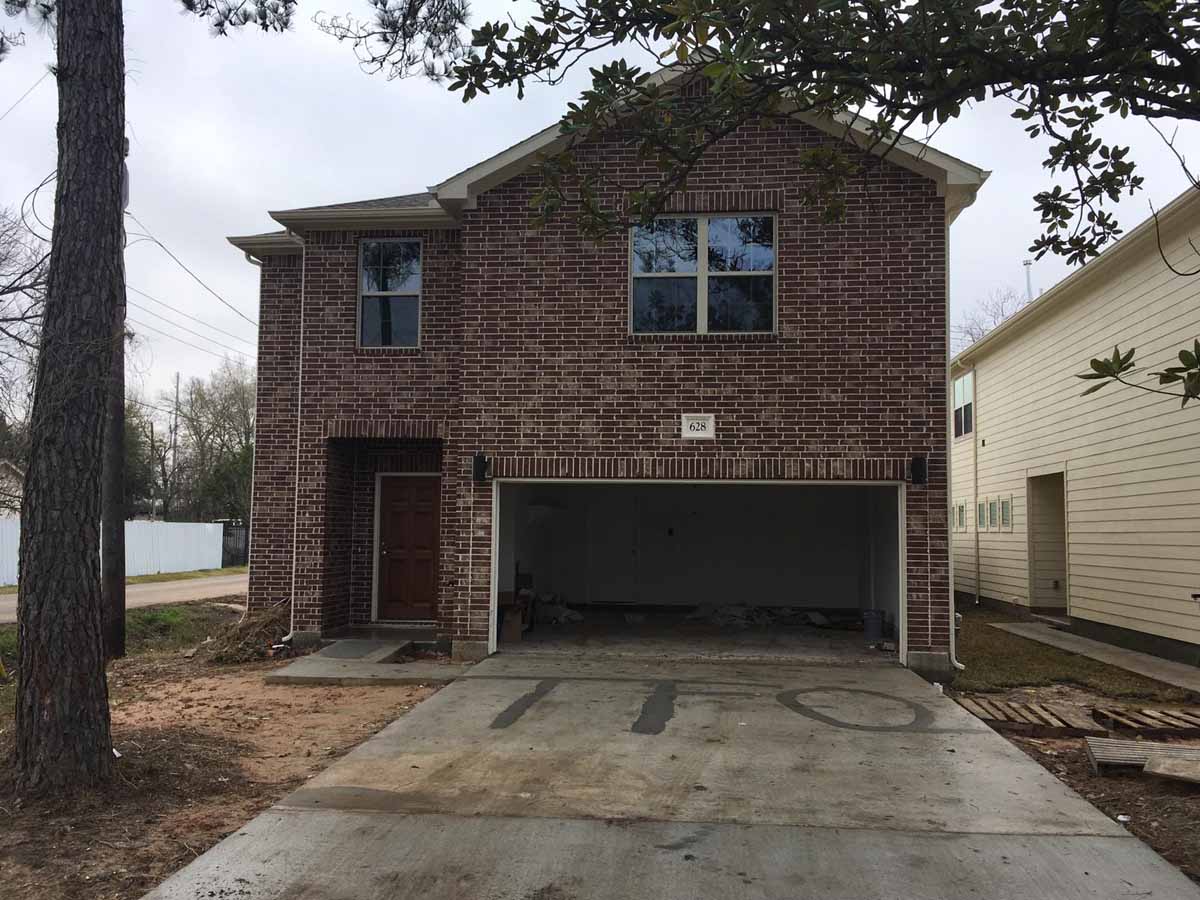
City of Houston Blower Door and Blaster – Home Ready Inspections is a full-service residential and commercial inspection company. We specialize in the 2015/2018 IECC inspections and provide the Final Blower Door/Duct Blaster required by the City of Houston and surrounding areas.
Other services offered is Insulation inspections, Energy Analysis (ResCheck or Rating), Manual J and D (HVAC Design), Thermal Inspections, Mechanical Inspections, Electrical Inspections, Plumbing Inspections, and we specialize in troubleshooting high humidity buildings and homes.
Contact us today to schedule or ask questions 832.661.6154
3920 Davenport St, Houston, TX 77051 – City of Houston Blower Door and Duct Blaster
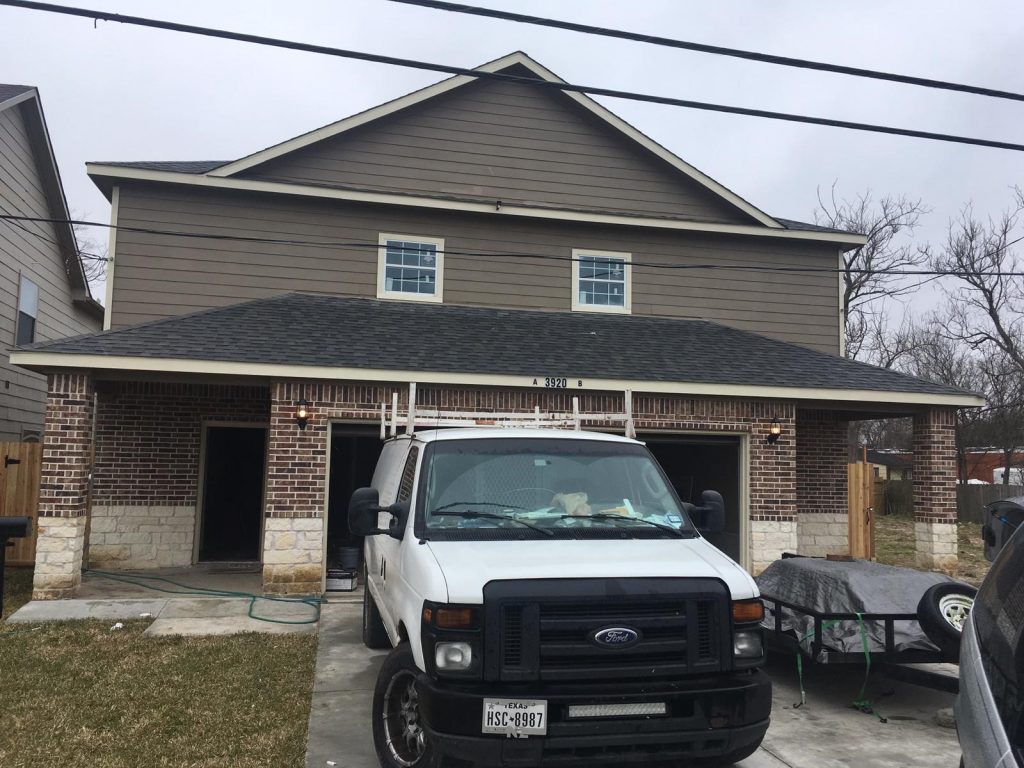
City of Houston Blower Door and Blaster – Home Ready Inspections is a full-service residential and commercial inspection company. We specialize in the 2015/2018 IECC inspections and provide the Final Blower Door/Duct Blaster required by the City of Houston and surrounding areas.
Other services offered are Insulation inspections, Energy Analysis (ResCheck or Rating), Manual J and D (HVAC Design), Thermal Inspections, Mechanical Inspections, Electrical Inspections, Plumbing Inspections, and we specialize in troubleshooting high humidity buildings and homes. Contact us today to schedule or ask questions 832.661.6154
Third Party Blower Door and Duct Blaster – 7704 Nasser, Houston Texas 77055
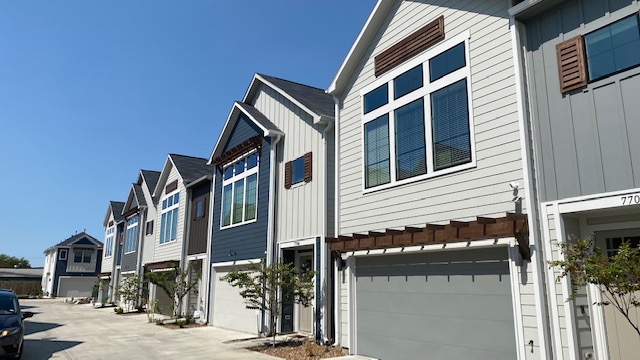
Third Party Blower Door and Duct Blaster – Home Ready Inspections is a full-service residential and commercial inspection company. We specialize in the 2015/2018 IECC inspections and provide the Final Blower Door/Duct Blaster required by the City of Houston and surrounding areas. Other services offered is Insulation inspections, Energy Analysis (ResCheck or Rating), Manual J and D (HVAC Design), Thermal Inspections, Mechanical Inspections, Electrical Inspections, Plumbing Inspections, and we specialize in troubleshooting high humidity buildings and homes. Contact us today to schedule or ask questions 832.661.6154
Blower Door and Duct Blaster
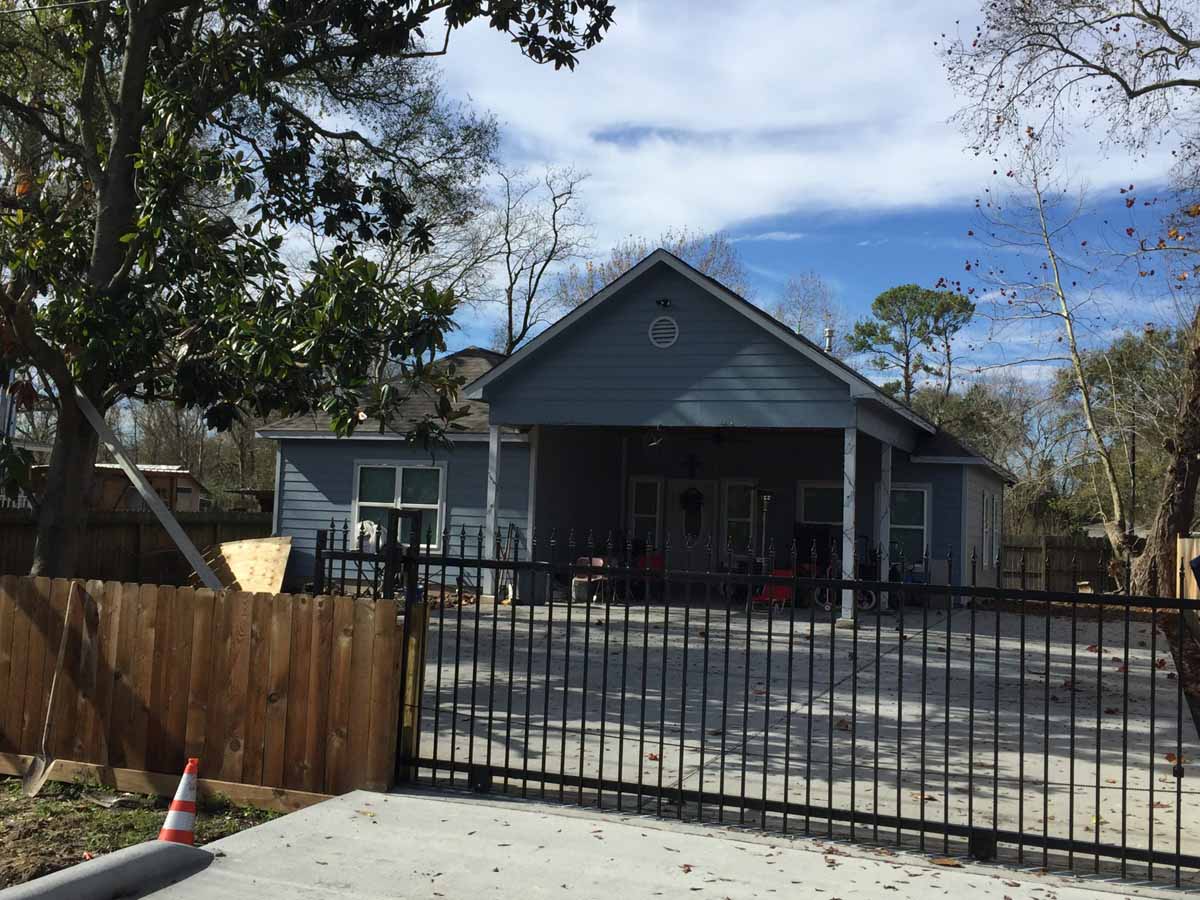
City of Houston Blower Door and Blaster – Home Ready Inspections is a full-service residential and commercial inspection company. We specialize in the 2015/2018 IECC inspections and provide the Final Blower Door/Duct Blaster required by the City of Houston and surrounding areas. Other services offered is Insulation inspections, Energy Analysis (ResCheck or Rating), Manual J and D (HVAC Design), Thermal Inspections, Mechanical Inspections, Electrical Inspections, Plumbing Inspections, and we specialize in troubleshooting high humidity buildings and homes. Contact us today to schedule or ask questions 832.661.6154
Houston Blower Door and Duct Blaster
City of Houston Blower Door and Blaster – Home Ready Inspections is a full-service residential and commercial inspection company. We specializing in the 2015/2018 IECC inspections and provide the Final Blower Door/Duct Blaster required by the City of Houston and surrounding areas. Other services offered is Insulation inspections, Energy Analysis (ResCheck or Rating), Manual J and D (HVAC Design), Thermal Inspections, Mechanical Inspections, Electrical Inspections, Plumbing Inspections, and we specialize in troubleshooting high humidity buildings and homes. Contact us today to schedule or ask questions 832.661.6154
City of Houston Blower Door and Duct Blaster Test Performed in Huffman Texas
Blower Door and Duct Test – 9817 Signet St., Houston, TX 77029
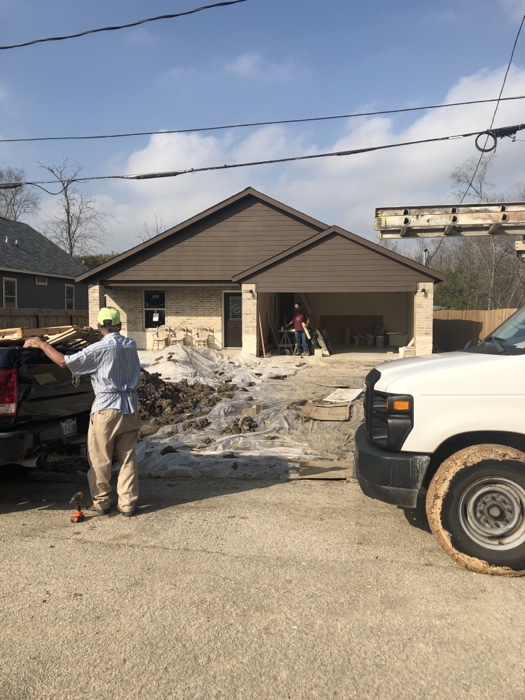
The Energy Conservatory – Minneapolis Duct Blaster – Houston, Texas 77021
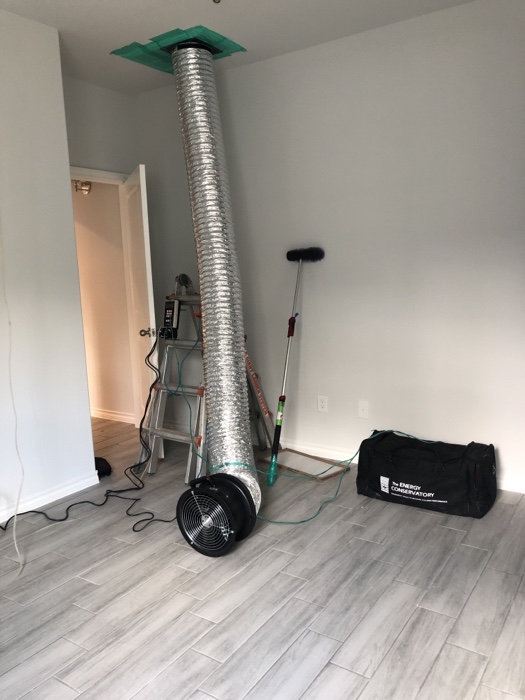
Minneapolis Duct Blaster
HRI uses Minneapolis Duct Blaster to perform and diagnose HVAC Duct Leakage. Call us today to schedule or for more information 832-661-6154
Galveston Insulation Inspection –
Galveston now requires a third party inspector to provide an insulation inspection prior to drywall/cover. HRI has work for multiple local builders in Galveston, TX providing such services which includes but not limited to Blower Doors, Duct Blaster, ResCheck, Manual J’s. Hire a professional who can provide all IECC inspections.
733 Tulane St, Houston, TX 77007 – City of Houston Duct Blaster Test
City of Houston now requires a duct leakage and a house leakage test at HVAC final. Call today to schedule 832-661-6154. 
Blower Door and Duct Leakage Test – 10806 Warwana Rd, Houston, TX 77043
City of Houston now requires a duct leakage and a house leakage test at HVAC final. Call today to schedule 832-661-6154.
City of Houston – Energy Testing Results (2015 IECC) -4405 Schuler St, Houston, TX 77007
City of Houston Blower Door and Blaster – Home Ready Inspections is a full-service residential and commercial inspection company. We specialize in the 2015/2018 IECC inspections and provide the Final Blower Door/Duct Blaster required by the City of Houston and surrounding areas. Other services offered is Insulation inspections, Energy Analysis (ResCheck or Rating), Manual J and D (HVAC Design), Thermal Inspections, Mechanical Inspections, Electrical Inspections, Plumbing Inspections, and we specialize in troubleshooting high humidity buildings and homes. Contact us today to schedule or ask questions 832.661.6154
2905 Ruth St, Houston, TX 77004 – Duct Test For Remodels and Additions
4111 Willet, Galveston, TX 77554 – Blower Door and Duct Blaster Test
Blower Door and Duct Blaster Test – Houston, TX 77087
8705 Bryam, Houston, Texas 77061 – City of Houston Blower Door and Duct Blaster
City of Houston Blower Door and Duct Test – 7607 Dyer St, Houston, TX 77088
City of Houston Blower Door and Duct Test – 7605 Dyer St, Houston, TX 77088
City of Houston Blower Door and Duct Test – 7603 Dyer St, Houston, TX 77088
City of Houston Blower Door and Duct Blaster
City of Houston Third Party Energy Inspection – Blower Door and Duct Blaster – 77502
City of Houston Blower Door and Duct Leakage Test – 735 Tulane St, Houston, Texas 77007
As part of the City of Houston IECC code requirements, a Blower Door (a diagnostic tool that measure the air leakage of a building envelope through unwanted air infiltration) and Duct Blaster/Duct Leakage Test (a diagnostic tool that measure the air leakage out of the HVAC system) is now required prior to the HVAC final.
Third Party Energy Test – 502 Llano St, Pasadena, Texas 77504
23150 Verano Dr, Galveston, Texas 77554 – City of Galveston Third Party Insulation and Blocking Inspection
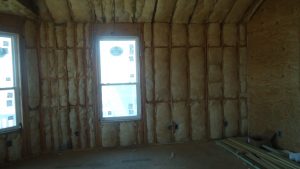
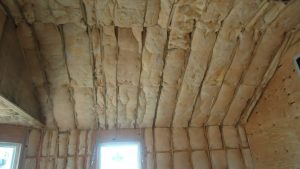
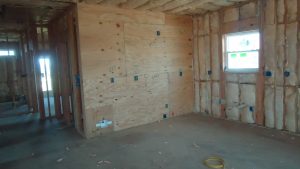
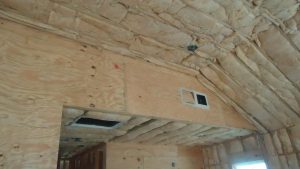
Home Ready Inspections now performs third party insulation and blocking inspection (pre-drywall) now for the city of Galveston. Call today to schedule before cover. 713-370-4328
11603 Main Birch, Houston, TX 77025 – City of Houston – Blower Door and Duct Test – Duct Leakage Test – Blow Test – Form No: 1302 rev 03/05/2018 – Energy Testing Results (2015) – Form No: CE – 1292 rev 04/12/2018
The city of Houston is enforcing the 2015 IECC energy codes. A third party energy inspection is required prior to scheduling for the HVAC final. Call today to schedule 832-661-6154.
Home Ready Inspections other services:
Thermal Imaging
Texas Real Estate Home Inspections
HVAC Inspections
Termite Inspections
Energy Star Inspections
HVAC Load Calculations (Manual J, D, and S)
Call To Schedule 832-661-6154
11609 Main Birch, Houston, TX 77025 – City of Houston – Blower Door and Duct Leakage Test – Form No: 1302 rev 03/05/2018 – Energy Testing Results (2015) – Form No: CE – 1292 rev 04/12/2018
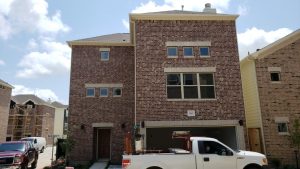
The city of Houston is enforcing the 2015 IECC energy codes. A third party energy inspection is required prior to scheduling for the HVAC final. Call today to schedule 832-661-6154.
Home Ready Inspections other services:
Thermal Imaging
Texas Real Estate Home Inspections
HVAC Inspections
Termite Inspections
Energy Star Inspections
HVAC Load Calculations (Manual J, D, and S)
Call To Schedule 832-661-6154
Duct Blaster and Load Calculation – 7805 Belroit Street, Houston, TX 77028
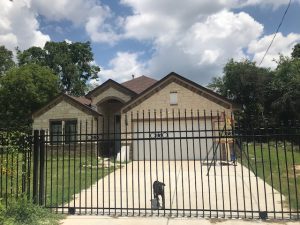
City of Houston has adopted the 2015 International Energy Conservation Code.
Duct leakage test is required on all new construction and remodels that is replacing the HVAC system and duct work. Today’s standards allow 4% duct leakage of the total square footage of the home.
A blower door is also required on all new construction. Today’s standards require new homes be between 5 and 3 air changes per hour (ACH). Lower than 3 ACH will require whole house ventilation system in to achieve the proper air changes per hour.
Manual J, D, and S is required on all HVAC system replacements and new construction. These calculations are recommended to be performed prior to bidding or installing.
Home Ready Inspections can provide Blower Doors, Duct Leakage Test, and Heat Load Analyzes for your construction needs. Call today to schedule your test before HVAC final 832-661-6154.
City of Houston Form CE-1302 and CE1292 – 4215 Koehler Street, Houston, TX 77007
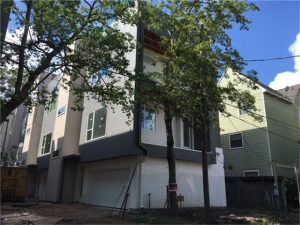
City of Houston has adopted the 2015 International Energy Conservation Code.
Duct leakage test is required on all new construction and remodels that is replacing the HVAC system and duct work. Today’s standards allow 4% duct leakage of the total square footage of the home.
A blower door is also required on all new construction. Today’s standards require new homes be between 5 and 3 air changes per hour (ACH). Lower than 3 ACH will require whole house ventilation system in to achieve the proper air changes per hour.
Manual J, D, and S is required on all HVAC system replacements and new construction. These calculations are recommended to be performed prior to bidding or installing.
Home Ready Inspections can provide Blower Doors, Duct Leakage Test, and Heat Load Analyzes for your construction needs. Call today to schedule your test before HVAC final 832-661-6154.
City of Houston Form 1302 – 4213A Koehler Street, Houston, TX 77007

City of Houston has adopted the 2015 International Energy Conservation Code.
Duct leakage test is required on all new construction and remodels that is replacing the HVAC system and duct work. Today’s standards allow 4% duct leakage of the total square footage of the home.
A blower door is also required on all new construction. Today’s standards require new homes be between 5 and 3 air changes per hour (ACH). Lower than 3 ACH will require whole house ventilation system in to achieve the proper air changes per hour.
Manual J, D, and S is required on all HVAC system replacements and new construction. These calculations are recommended to be performed prior to bidding or installing.
Home Ready Inspections can provide Blower Doors, Duct Leakage Test, and Heat Load Analyzes for your construction needs. Call today to schedule your test before HVAC final 832-661-6154.
City of Houston Third Party Energy Test – 4213 Koehler Street, Houston, TX 77007

City of Houston has adopted the 2015 International Energy Conservation Code.
Duct leakage test is required on all new construction and remodels that is replacing the HVAC system and duct work. Today’s standards allow 4% duct leakage of the total square footage of the home.
A blower door is also required on all new construction. Today’s standards require new homes be between 5 and 3 air changes per hour (ACH). Lower than 3 ACH will require whole house ventilation system in to achieve the proper air changes per hour.
Manual J, D, and S is required on all HVAC system replacements and new construction. These calculations are recommended to be performed prior to bidding or installing.
Home Ready Inspections can provide Blower Doors, Duct Leakage Test, and Heat Load Analyzes for your construction needs. Call today to schedule your test before HVAC final 832-661-6154.
4211A Koehler Street, Houston, TX 77007 – Blower Door and Duct Blaster

City of Houston has adopted the 2015 International Energy Conservation Code.
Duct leakage test is required on all new construction and remodels that is replacing the HVAC system and duct work. Today’s standards allow 4% duct leakage of the total square footage of the home.
A blower door is also required on all new construction. Today’s standards require new homes be between 5 and 3 air changes per hour (ACH). Lower than 3 ACH will require whole house ventilation system in to achieve the proper air changes per hour.
Manual J, D, and S is required on all HVAC system replacements and new construction. These calculations are recommended to be performed prior to bidding or installing.
Home Ready Inspections can provide Blower Doors, Duct Leakage Test, and Heat Load Analyzes for your construction needs. Call today to schedule your test before HVAC final 832-661-6154.
4211 Koehler Street, Houston, TX 77007 – Third Party Blower Door and Duct Blaster

City of Houston has adopted the 2015 International Energy Conservation Code.
Duct leakage test is required on all new construction and remodels that is replacing the HVAC system and duct work. Today’s standards allow 4% duct leakage of the total square footage of the home.
A blower door is also required on all new construction. Today’s standards require new homes be between 5 and 3 air changes per hour (ACH). Lower than 3 ACH will require whole house ventilation system in to achieve the proper air changes per hour.
Manual J, D, and S is required on all HVAC system replacements and new construction. These calculations are recommended to be performed prior to bidding or installing.
Home Ready Inspections can provide Blower Doors, Duct Leakage Test, and Heat Load Analyzes for your construction needs. Call 832-661-6154 for more information.
Blower Door and Duct Blaster – 4118 Surf, Galveston, TX 77554
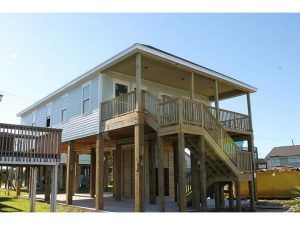
City of Galveston has adopted the 2015 International Energy Conservation Code.
Duct Blaster Leakage Test is required on all new construction and remodels that is replacing the HVAC system and duct work. Today’s standards allow 5% duct leakage of the total square footage of the home.
A blower door is also required on all new construction. Today’s standards require new homes be between 5 and 3 air changes per hour (ACH). Lower than 3 ACH will require whole house ventilation system in to achieve the proper air changes per hour.
Manual J, D, and S is required on all HVAC system replacements and new construction. These calculations are recommended to be performed prior to bidding or installing.
Home Ready Inspections can provide Blower Doors, Duct Leakage Test, and Heat Load Analyzes for your construction needs. Call 832-661-6154 for more information.
City of Galvestion Third Party Duct Leakage Test – 3650 Foremast, Galveston, Texas 77554
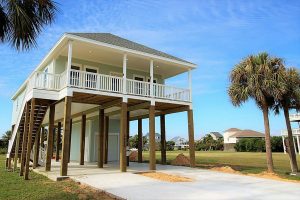
Duct Blaster
City of Galveston has adopted the 2012 International Energy Conservation Code.
Duct leakage test is required on all new construction and remodels that is replacing the HVAC system and duct work. Today’s standards allow 5% duct leakage of the total square footage of the home.
A blower door is also required on all new construction. Today’s standards require new homes be between 5 and 3 air changes per hour (ACH). Lower than 3 ACH will require whole house ventilation system in to achieve the proper air changes per hour.
Manual J, D, and S is required on all HVAC system replacements and new construction. These calculations are recommended to be performed prior to bidding or installing.
Home Ready Inspections can provide Blower Doors, Duct Leakage Test, and Heat Load Analyzes for your construction needs. Call 832-661-6154 for more information.
